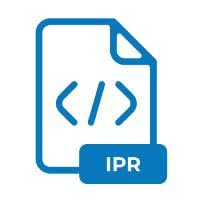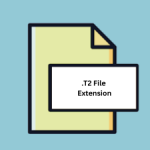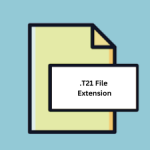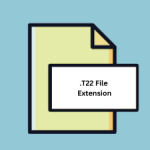.IPR File Extension

InstallShield Professional Project File
| Developer | Flexera Software |
| Popularity | |
| Category | Developer Files |
| Format | .IPR |
| Cross Platform | Update Soon |
What is an IPR file?
.IPRT files are primarily associated with InstallShield Professional, a software tool developed by Flexera. These files serve as project files, encapsulating essential data and configurations necessary for the creation and management of installation packages.
InstallShield Professional is renowned for its comprehensive features, enabling developers to streamline the process of deploying software across various platforms.
More Information.
The genesis of .IPR files coincides with the emergence of InstallShield Professional, which revolutionized the software deployment landscape.
Initially introduced as a solution for Windows-based applications, InstallShield Professional swiftly garnered popularity due to its versatility and ease of use.
.IPRT files were conceived to centralize project-related data, facilitating collaboration among development teams and ensuring consistency across different builds.
Over time, InstallShield Professional expanded its repertoire to encompass diverse platforms, including macOS and Linux, further cementing its relevance of .IPR files in the software development milieu.
Origin Of This File.
InstallShield, the precursor to InstallShield Professional, emerged in the early 1990s as a solution to simplify software installation procedures.
As software complexity burgeoned, the need for efficient deployment mechanisms became paramount. InstallShield filled this void, offering developers a user-friendly interface to package their applications for distribution.
With the evolution of InstallShield came the .IPR file extension, denoting InstallShield Professional Project Files. These files became integral components of the software development workflow, containing configurations, scripts, dependencies, and other pertinent information required for crafting installation packages.
File Structure Technical Specification.
.IPRT files exhibit a structured format, meticulously organizing data pertinent to the installation project. While the precise structure may vary based on the version of InstallShield Professional in use, typical components include:
- Project Settings: This section encompasses general project configurations, such as target platforms, installation paths, and user interface settings.
- Components & Features: .IPR files delineate the components and features comprising the installation package, along with their respective dependencies and installation conditions.
- Scripts: InstallShield Professional allows developers to incorporate custom scripts for executing pre-installation, post-installation, and maintenance tasks. .IPR files store these scripts, ensuring their seamless integration into the installation process.
- Dependencies: To ensure the smooth functioning of the installed software, .IPR files enumerate dependencies on system libraries, runtime environments, and other requisite components.
- Localization: For global software deployment, .IPR files support localization features, enabling developers to tailor installations for specific locales and languages.
Understanding the technical intricacies of .IPR files empower developers to harness the full potential of InstallShield Professional, optimizing the deployment process and enhancing end-user experiences.
How to Convert the File?
Converting .IPR files may be necessary to accommodate different development environments or deployment platforms.
Here’s a step-by-step guide on how to convert .IPR files to alternative formats:
Using InstallShield Professional:
- Open InstallShield Professional on your Windows system.
- Load the .IPR project file within InstallShield Professional by selecting “File” > “Open” and navigating to the location of the .IPR file.
- Once the project is open, go to the “Build” menu and select the desired output format for conversion (e.g., .MSI for Windows Installer).
- Follow the prompts to configure the conversion settings, including installation options, dependencies, and target platforms.
- After configuring the conversion settings, initiate the build process by selecting “Build” > “Build Solution” or a similar option.
- Wait for the conversion process to complete. Once finished, the converted file will be available in the specified output format.
Using Third-Party Conversion Tools:
- Identify a reputable third-party conversion tool that supports .IPR files and the desired output format (e.g., .MSI, .EXE).
- Download and install the conversion tool on your system.
- Launch the conversion tool and locate the .IPR file you wish to convert.
- Select the .IPR file as the input and specify the desired output format.
- Configure any additional settings or options according to your preferences.
- Initiate the conversion process and wait for it to complete.
- Once the conversion is finished, the converted file will be available in the specified output format.
Advantages And Disadvantages.
Advantages:
- Comprehensive Project Management: .IPR files centralize project-related data, facilitating efficient project management and collaboration among development teams.
- Customization: InstallShield Professional offers extensive customization options, empowering developers to tailor installation packages to meet specific requirements.
- Cross-Platform Compatibility: While initially designed for Windows applications, InstallShield Professional supports cross-platform development, enabling the creation of installation packages for macOS and Linux.
Disadvantages:
- Vendor Lock-in: Utilizing InstallShield Professional entails dependency on proprietary software, potentially limiting flexibility and vendor lock-in.
- Learning Curve: Mastering InstallShield Professional and navigating .IPR files may require a significant learning curve, especially for novice developers.
- Resource Intensive: Creating complex installation packages with InstallShield Professional may consume considerable time and resources, particularly for large-scale projects.
How to Open IPR?
Open In Windows
- Double-click on the .IPR file and it should automatically open in InstallShield Professional if it’s installed on your system.
- If InstallShield Professional is not installed, you’ll need to download and install it from the official website. Once installed, follow the same steps to open the .IPR file.
Open In Linux
- Similar to macOS, you’ll need to use a Windows emulator or virtualization software like Wine or VirtualBox on your Linux system.
- Set up a virtual machine with Windows installed or use Wine to run Windows applications directly on Linux.
- Install InstallShield Professional within the virtual machine or through Wine.
- Transfer the .IPR file to the Windows environment.
- Open InstallShield Professional and load the .IPR file as outlined previously.
Open In MAC
- Install a Windows emulator or virtualization software, such as Parallels Desktop or VMware Fusion, on your macOS system.
- Set up a virtual machine with a Windows operating system installed.
- Install InstallShield Professional within the virtual machine.
- Transfer the .IPR file to the virtual machine’s Windows environment.
- Open InstallShield Professional within the virtual machine and load the .IPR file as described earlier.













